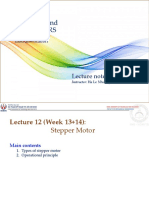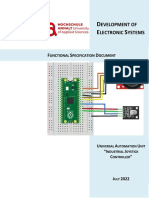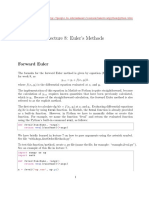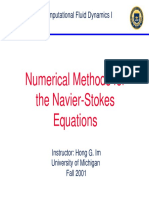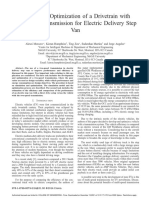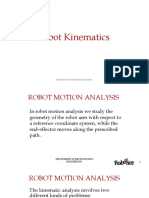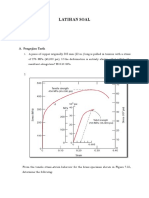0% found this document useful (0 votes)
9 views47 pagesSensors and Signal Processing: Lecture Notes
The document outlines lecture notes on resistive sensors, including potentiometers, strain gauges, and resistive temperature detectors (RTDs). It discusses the operational principles, configurations, and applications of these sensors, emphasizing their reliance on variations in resistance. Practical examples and calculations are provided to illustrate the concepts and challenges associated with each type of sensor.
Uploaded by
thangoc36Copyright
© © All Rights Reserved
We take content rights seriously. If you suspect this is your content, claim it here.
Available Formats
Download as DOCX, PDF, TXT or read online on Scribd
0% found this document useful (0 votes)
9 views47 pagesSensors and Signal Processing: Lecture Notes
The document outlines lecture notes on resistive sensors, including potentiometers, strain gauges, and resistive temperature detectors (RTDs). It discusses the operational principles, configurations, and applications of these sensors, emphasizing their reliance on variations in resistance. Practical examples and calculations are provided to illustrate the concepts and challenges associated with each type of sensor.
Uploaded by
thangoc36Copyright
© © All Rights Reserved
We take content rights seriously. If you suspect this is your content, claim it here.
Available Formats
Download as DOCX, PDF, TXT or read online on Scribd
/ 47



